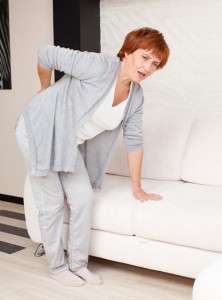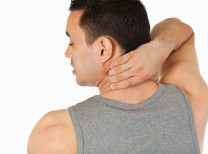Low back pain is the fifth most common reason for individuals to visit their physician, and it will occur in approximately 80% of individuals at some point in their life.1 Nationally, those doctor visits cost an estimated $100 billion cumulatively in a given year.2 Often back pain can be easily relieved through physical therapy which does not directly contribute to the aforementioned cost; and in fact, it may actually decrease the overall cost. There are many common movement patterns that can contribute to low back pain which can easily be altered with physical therapy.

Learning to move can negate back pain
Have pain with sitting?
The number one movement-related impairment for individuals who have pain when sitting is decreased flexibility at the hips. If your hips are stiff, you end up sitting too slouched, which adds stress to your back. Make sure your seat is high enough to allow your feet to be on the floor with approximately a seventy degree angle at your hips. Most importantly, you should have an arched back to allow the muscles in your back to be relaxed and decrease the amount of stress. Sit on a towel roll or small pillow to help tilt your pelvis forward and create the small arc in your back.
Have pain with lifting?
There are many small muscles in the low back used to stabilize our core during activity, but they are not meant to be a primary lifter of our core. If you have pain when lifting – even small items – you may be using your back too much. Learn to use your powerful gluteal muscles which are meant to be our primary lifters. Keep your back straight, stick your bottom out, and bend from the hips and knees (but more your hips).
Have pain with walking or running?
Low back pain while walking or running can have many causes, but the most common contributors are decreased flexibility of the muscles in the front of your hip and decreased gluteal muscle strength. When your hips cannot move backwards while walking or running, your body compensates with excessive low back movement. Stretch the muscles in the front of your hip (hip flexors) to allow you to move your hips back while walking or running.
Changing the faulty movement strategies which contribute to low back pain is often the most important lesson learned while participating in physical therapy. These hints often take practice and in-depth monitoring to determine if they will be beneficial in decreasing symptoms, but when combined with the strengthening and stretching needed to perform the movements correctly, pain can be alleviated.
Dr. Alan Eldridge is a Board-Certified Orthopaedic Clinical Specialist for Avid Physical Therapy and can be reached at [email protected] (760) 202.0368.
References: 1) Browning, Gerald. Mechanical low back-pain, prevalence and costs. School of Health Professions, University of Missouri-Columbia. 2005. http://shp.missouri.edu/vhct/case1699/preval_costs.htm.Accessed 5/23/13; 2) Crow WT, Willis DR. Estimating costs of care for patients with acute low back pain: A retrospective review of patient records. Journal of American Osteopathis Association. April 1, 2009. Vol 109 229-233.; 3) Fritz JM, Childs JD, WAinner RS, Flynn TW. Primary care referral of patients with low back pain to physical therapy: impact on future health care utilization and costs. Spine. Dec 2012. 1;37(25):2114-21.













































Comments (0)